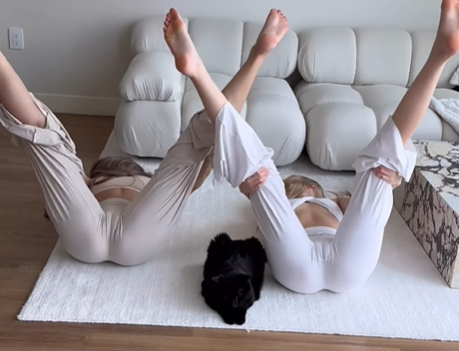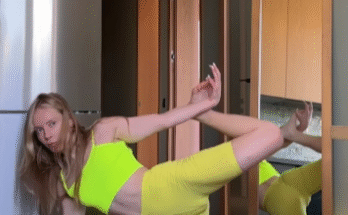In today’s fast-paced world, stretching is an essential yet often overlooked practice for maintaining mobility, reducing stiffness, and improving overall flexibility. Among the many areas that require attention, the deep abductors play a critical role in stabilizing the hips and improving lower body movement. In collaboration with @LilliesYoga, we’re diving into an effective deep abductor leg yoga stretch that can enhance flexibility, relieve tension, and support joint health. Whether you’re an athlete, a yoga enthusiast, or simply someone looking to improve mobility, this stretch can be a game-changer.
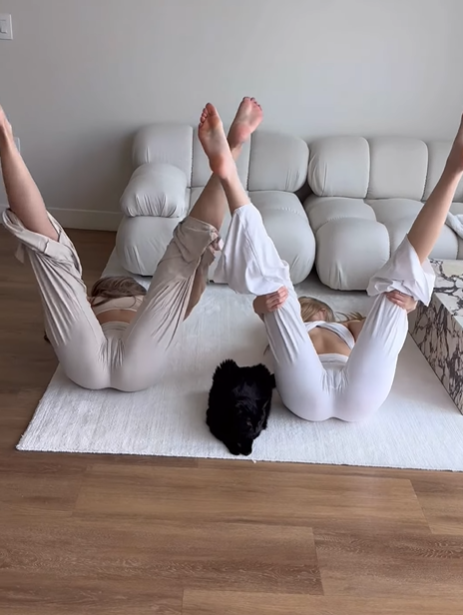
Understanding the Deep Abductors
The deep abductor muscles, including the gluteus medius, gluteus minimus, and tensor fasciae latae (TFL), are responsible for moving the legs away from the body’s midline. These muscles play an essential role in hip stability and leg movement, which is why tightness or weakness in these muscles can lead to discomfort, restricted movement, and even injury.

Tight abductors can result from prolonged sitting, repetitive movement patterns, or even imbalanced workout routines. When these muscles become tight, they can contribute to lower back pain, hip discomfort, and decreased athletic performance. Regular stretching helps to counteract these issues and ensures better movement patterns and flexibility.
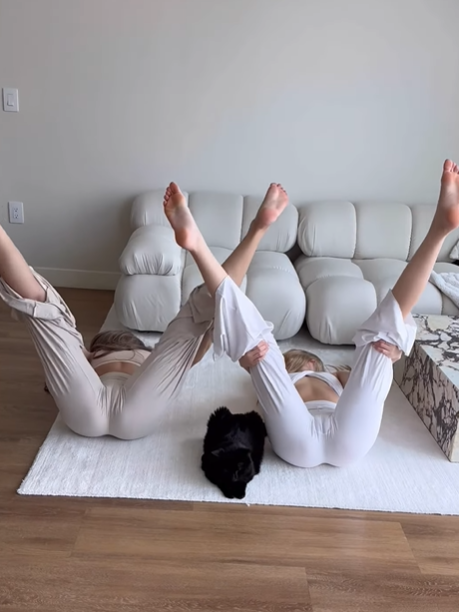
The Benefits of Deep Abductor Stretches
Incorporating deep abductor stretches into your routine can provide a multitude of benefits, including:
- Enhanced Mobility: Stretching these muscles improves leg movement and hip flexibility, making it easier to perform daily activities.
- Injury Prevention: By keeping these muscles supple and balanced, you reduce the risk of strains, hip pain, and lower back discomfort.
- Improved Posture: The abductors help stabilize the pelvis, which in turn affects overall posture and spinal alignment.
- Better Athletic Performance: Strong and flexible abductors contribute to more efficient movement patterns, benefiting runners, cyclists, dancers, and gym-goers alike.
- Reduced Muscle Tension: Stretching alleviates tightness and stress built up in the hips and thighs.
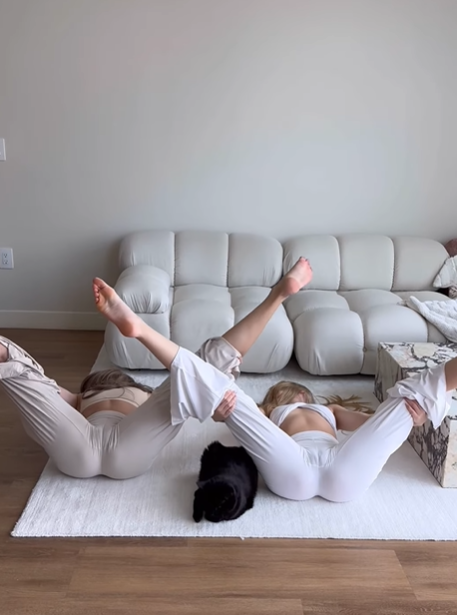
Preparing for the Deep Abductor Stretch
Before diving into the deep abductor stretch, it’s important to warm up properly. A few minutes of gentle movement, such as hip circles, light jogging, or dynamic lunges, can prepare the muscles for stretching. Additionally, focusing on deep breathing will help to maximize the stretch and encourage relaxation.
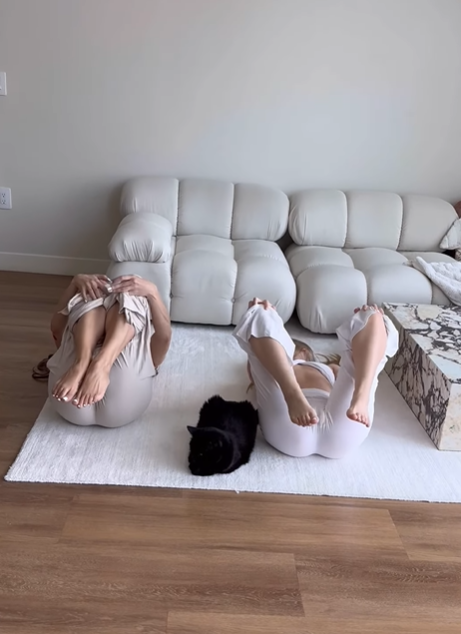
The Deep Abductor Leg Yoga Stretch with @LilliesYoga
Step-by-Step Guide
- Start in a Seated Position: Sit comfortably on your mat with your legs extended straight in front of you.
- Bend Your Right Knee: Bring your right foot towards your left inner thigh in a half-butterfly position.
- Extend Your Left Leg Outward: Keep your left leg extended straight while engaging your core.
- Fold Gently Over Your Left Leg: Begin to hinge at the hips and lean forward, reaching toward your left foot with both hands. If reaching the foot is difficult, use a yoga strap or keep your hands resting on your shin.
- Hold the Stretch: Maintain this position for about 30 to 60 seconds, taking deep, slow breaths to deepen the stretch.
- Switch Sides: Slowly return to an upright position and repeat on the other side.
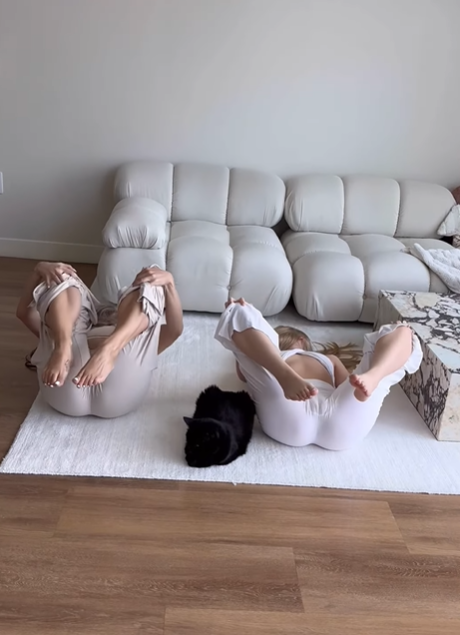
Modifications and Variations
Depending on your flexibility and mobility level, you can modify or deepen the stretch:
- Use a Block or Strap: If you can’t comfortably reach your extended leg, use a yoga strap or place a block under your hands for support.
- Bend the Extended Leg Slightly: If you experience discomfort in the hamstring, keep a slight bend in the extended leg.
- Twist for a Deeper Stretch: For a more advanced version, add a gentle spinal twist by reaching your opposite arm across the extended leg.
Breathing and Mindfulness in the Stretch
Yoga is not just about physical movement; it also involves mindful breathing. As you hold the deep abductor stretch, focus on:
- Inhaling deeply through the nose to expand the lungs and relax the body.
- Exhaling slowly through the mouth to release tension in the hips and legs.
- Visualizing relaxation and increased flexibility with each breath.
By syncing breath with movement, you can maximize the benefits of the stretch and improve relaxation.
When to Perform This Stretch
This deep abductor leg yoga stretch can be performed at different times based on your needs:
- Before a Workout: To activate the muscles and increase blood flow.
- After Exercise: To help reduce stiffness and promote recovery.
- As Part of a Daily Routine: To counteract prolonged sitting and maintain flexibility.
- Before Bedtime: To relax the body and release accumulated tension from the day.
Common Mistakes to Avoid
To ensure you’re performing this stretch correctly and safely, keep these common mistakes in mind:
- Overstretching: Avoid forcing yourself into a deeper stretch than your body allows.
- Rounding the Back: Maintain a straight spine as you fold forward.
- Holding Your Breath: Remember to breathe deeply to aid relaxation.
- Neglecting One Side: Make sure to stretch both legs equally for balanced flexibility.
Final Thoughts
The deep abductor leg yoga stretch with @LilliesYoga is an excellent addition to any mobility or yoga routine. Whether you’re looking to increase flexibility, prevent injuries, or simply feel more at ease in your body, this stretch provides an effective way to achieve your goals.
Consistency is key—regular practice will lead to noticeable improvements in your range of motion and overall comfort. So, roll out your mat, take a deep breath, and give your abductors the attention they deserve!
Are you ready to incorporate this stretch into your routine? Let us know how it works for you and connect with @LilliesYoga for more expert yoga insights!
